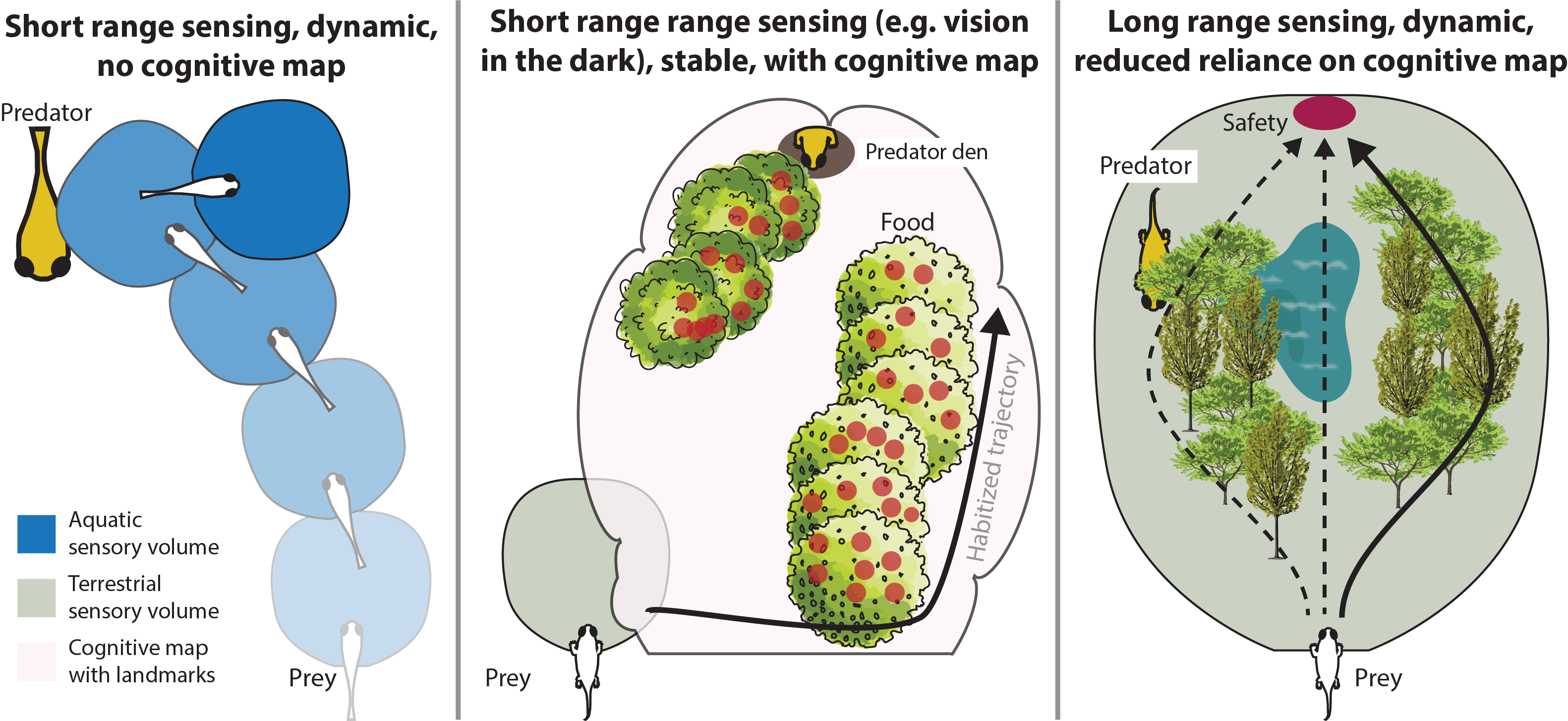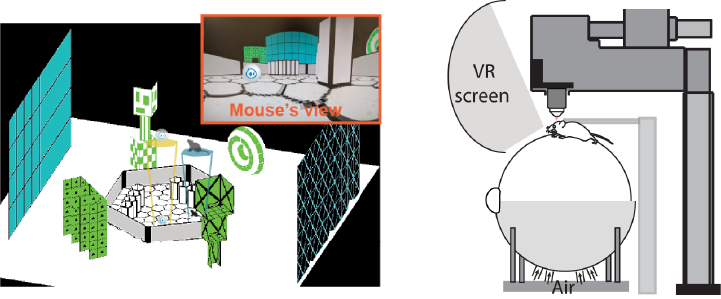Algorithmic and Neural Basis of Naturalistic Decision Making
When a situation affords a long latency between stimulus and response, deliberative behavioral control can be used to generate behavior that is strategic, variable, and hard to predict by an adversary. As this latency decreases, reactive control takes over and generates responses that are fast, less variable, and easier to predict by an adversary. We can characterize deliberative behavioral control or planning as action choices that occur after internally simulating more than one action sequence and its respective consequences. Conversely, reactive control is a rapid stimulus-evoked response. A large amount of research suggests that these two decision making systems have different neural substrates. Interestingly, the similarities between the lamprey (jawless fish that preceded mammals by 560 million years) and mammalian neural system that is implicated in reflexive behavior suggests that reactive control evolved very early on in the vertebrate evolution. In contrast, behavioral and neural evidence for planing and higher level cognition seems to only exist for mammals and birds. Evidence for planning is less clear for reptiles and amphibians, and similarly ambiguous or absent in fish.
Assuming the apparent absence of plan-based decision making in fish and other early vertebrates is correct (and not simply due to a lack of study relative to terrestrial vertebrates), we can use the uneven distribution of higher level cognition to gain insight into why we only see this in (certain) animals.

Conventionally, we think of nervous systems as the means by which an animal organizes its world, but a deep time perspective suggests that it is rather the world of an animal that organizes its brain. Our work shows that prior to the vertebrate invasion of land 385 million years ago, eyes tripled in size and shifted from the sides to the top of the head. Simulations of these animal's visual ecology suggests that these morphological changes would only be advantageous if animals were viewing through air, just above the water line, while still primarily inhabiting water. Therefore, before permanent life on land these animals probably hunted like crocodiles, where the vastly higher transparency of air enabled a more than 100-fold increase in visual range when compared to vision through water. The increase in visual range allowed these early vertebrates to see distant potential drivers of behavior, such as predator or prey, and afforded long delays between stimulus and response. A possible reason for the greatly increased size and complexity of terrestrial vertebrate brains over those of fish is that this environment provides selective advantage to long sequences of actions toward distant goals, reaching its most complex form in varieties of prospective cognition in certain mammals and birds.

Rooted in evolution, we study both the algorithmic formalization and neural substrates of naturalistic decision making, which encompasses decision making in temporally extended naturalistic environments. Our theoretical and algorithmic work aims to elucidate the effects of environment topology and complexity on state-space representations, and choice of arbitration between habit and planning. Our empirical work, conducted in collaboration with Daniel Dombeck (Department of Neurobiology), involves both behavioral and in-vivo imaging of mammalian brains in highly uncertain environments that mimic idealized predator-prey interactions to understand the biological mechanisms involved in decision making in more naturalistic tasks.

|

|
People
Collaborators
- Daniel Dombeck, Dept. of Neurobiology, Northwestern Universtiy
- Heydar Davoudi, Postdoc in the Dombeck Lab
Related Publications
Spatial planning with long visual range benefits escape from visual predators in complex naturalistic environments
Ugurcan Mugan, Malcolm A. MacIver
Under revision, Nature Communications, 2020 (Preprint)
Arbitrating between planning and habit in naturalistic environments
Ugurcan Mugan, Malcolm A. MacIver
Conference on Cognitive Computational Neuroscience, Berlin GR, 2019 (Article)
How sensory ecology affects the utility of planning
Ugurcan Mugan, Malcolm A. MacIver
Conference on Cognitive Computational Neuroscience, Philadelphia PA, 2018 (Article, Presentation)
Massive increase in visual range preceded the origin of terrestrial vertebrates
Malcolm A. MacIver, Lars Schmitz, Ugurcan Mugan, Todd D. Murphey, Curtis D. Mobley
Proceedings of the National Academy of Sciences, 2017 (Article, Video Explainer)
Neuroscience Needs Behavior: Correcting a Reductionist Bias
John W. Krakauer, Asif A. Ghazanfar, Alex Gomez-Martin, Malcolm A. MacIver, David Poeppel
Neuron, 2017 (Article)